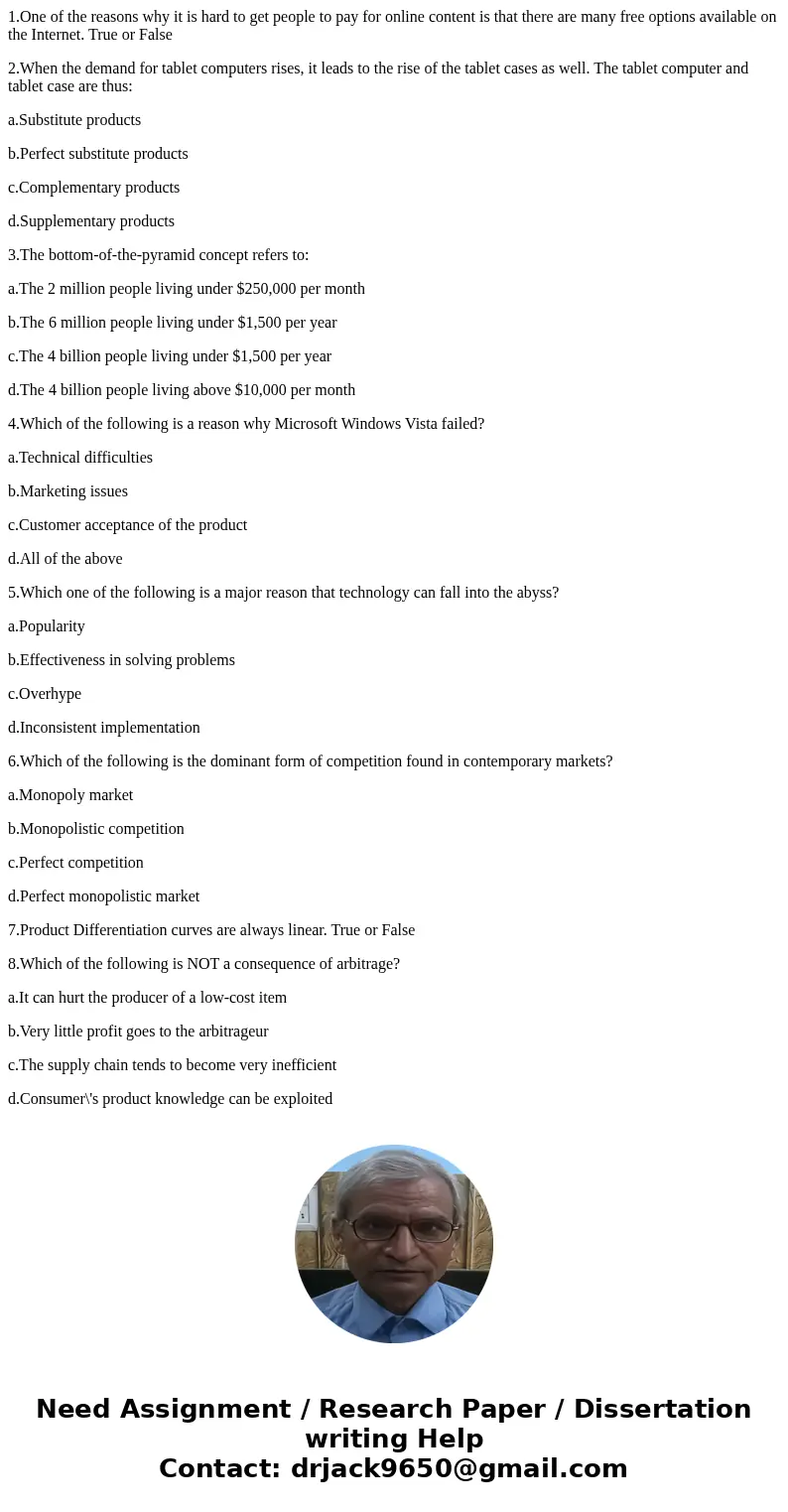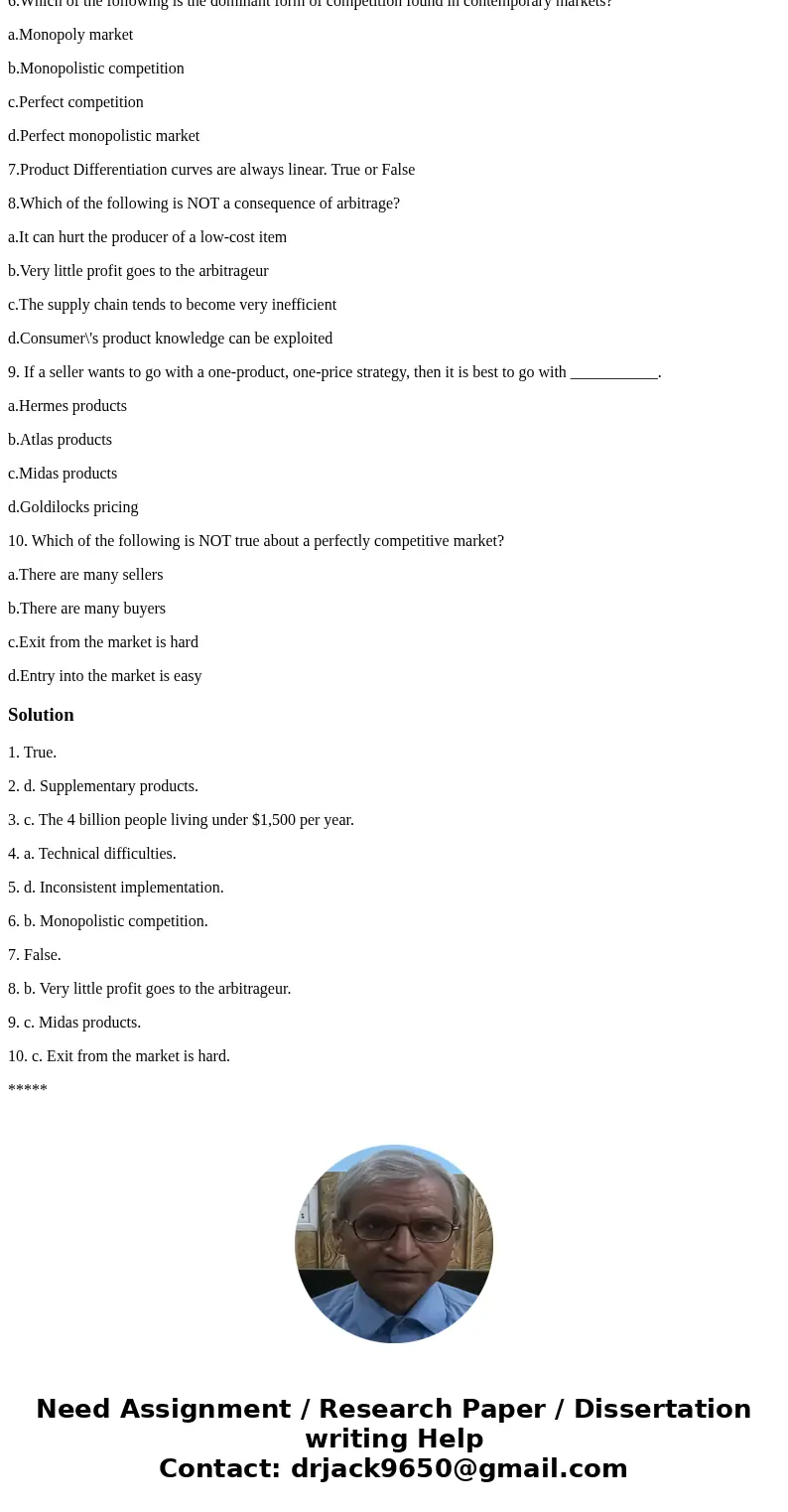1One of the reasons why it is hard to get people to pay for
1.One of the reasons why it is hard to get people to pay for online content is that there are many free options available on the Internet. True or False
2.When the demand for tablet computers rises, it leads to the rise of the tablet cases as well. The tablet computer and tablet case are thus:
a.Substitute products
b.Perfect substitute products
c.Complementary products
d.Supplementary products
3.The bottom-of-the-pyramid concept refers to:
a.The 2 million people living under $250,000 per month
b.The 6 million people living under $1,500 per year
c.The 4 billion people living under $1,500 per year
d.The 4 billion people living above $10,000 per month
4.Which of the following is a reason why Microsoft Windows Vista failed?
a.Technical difficulties
b.Marketing issues
c.Customer acceptance of the product
d.All of the above
5.Which one of the following is a major reason that technology can fall into the abyss?
a.Popularity
b.Effectiveness in solving problems
c.Overhype
d.Inconsistent implementation
6.Which of the following is the dominant form of competition found in contemporary markets?
a.Monopoly market
b.Monopolistic competition
c.Perfect competition
d.Perfect monopolistic market
7.Product Differentiation curves are always linear. True or False
8.Which of the following is NOT a consequence of arbitrage?
a.It can hurt the producer of a low-cost item
b.Very little profit goes to the arbitrageur
c.The supply chain tends to become very inefficient
d.Consumer\'s product knowledge can be exploited
9. If a seller wants to go with a one-product, one-price strategy, then it is best to go with ___________.
a.Hermes products
b.Atlas products
c.Midas products
d.Goldilocks pricing
10. Which of the following is NOT true about a perfectly competitive market?
a.There are many sellers
b.There are many buyers
c.Exit from the market is hard
d.Entry into the market is easy
Solution
1. True.
2. d. Supplementary products.
3. c. The 4 billion people living under $1,500 per year.
4. a. Technical difficulties.
5. d. Inconsistent implementation.
6. b. Monopolistic competition.
7. False.
8. b. Very little profit goes to the arbitrageur.
9. c. Midas products.
10. c. Exit from the market is hard.
*****


 Homework Sourse
Homework Sourse